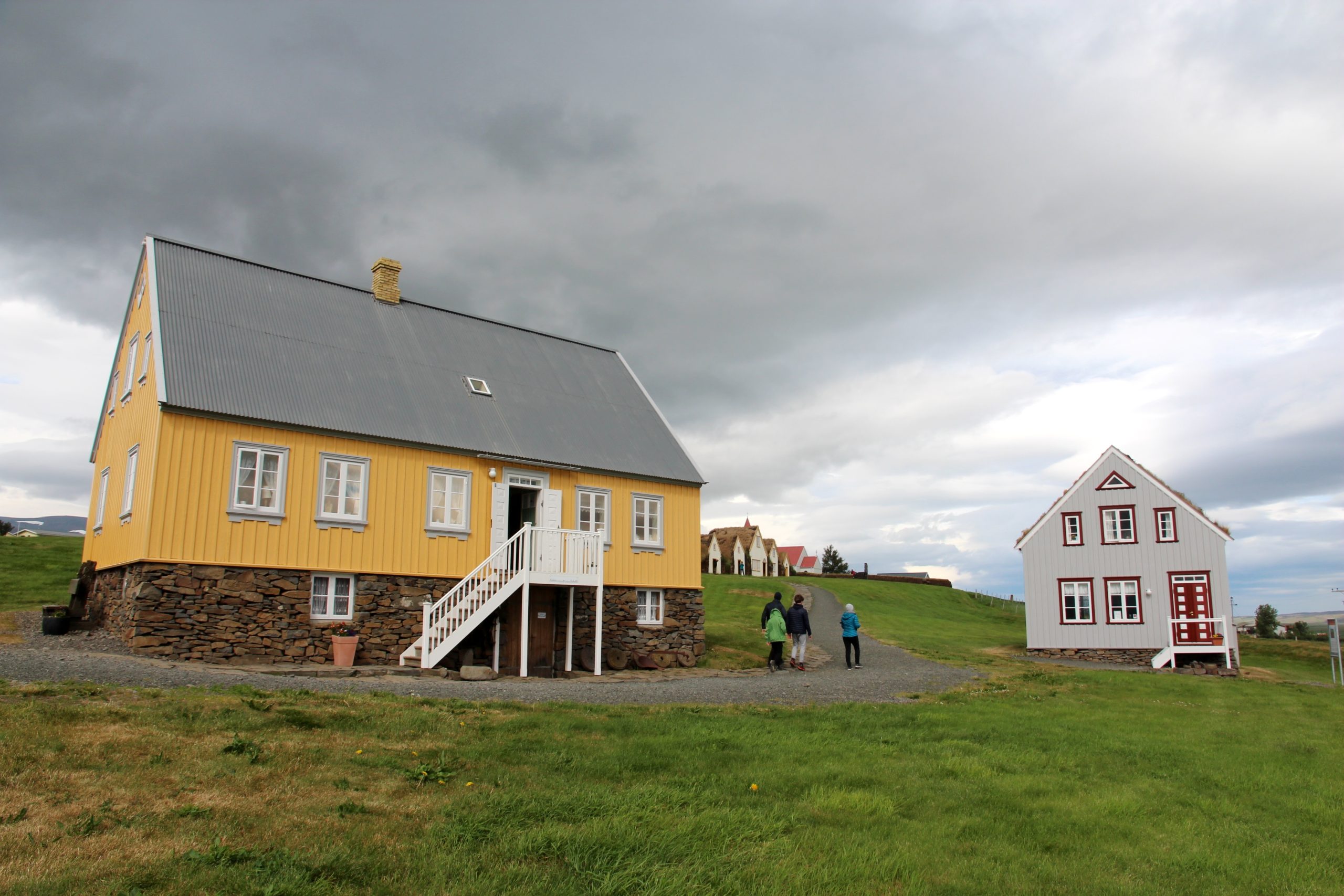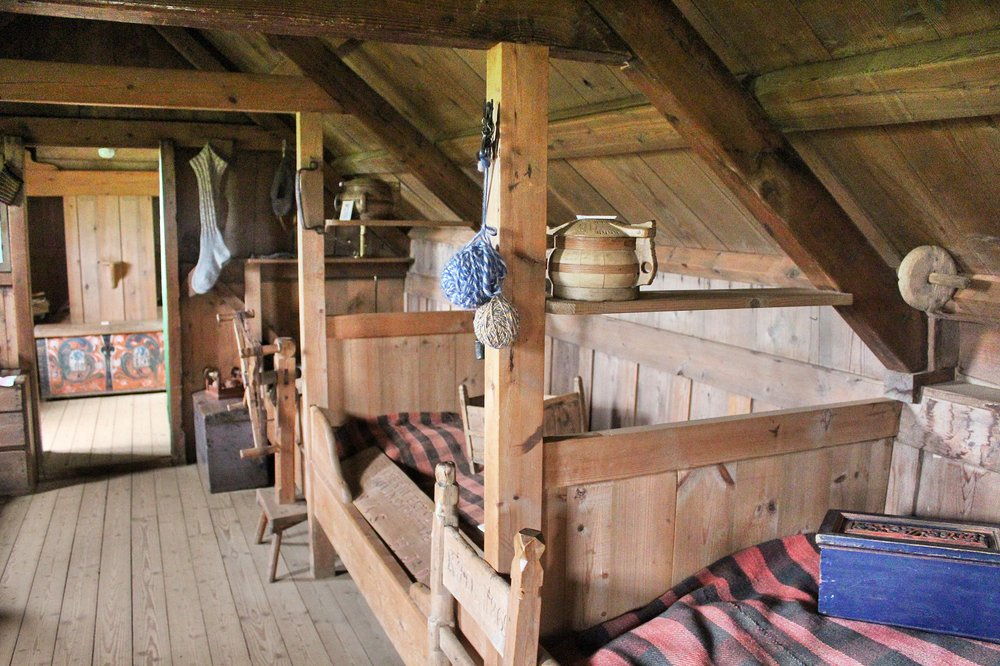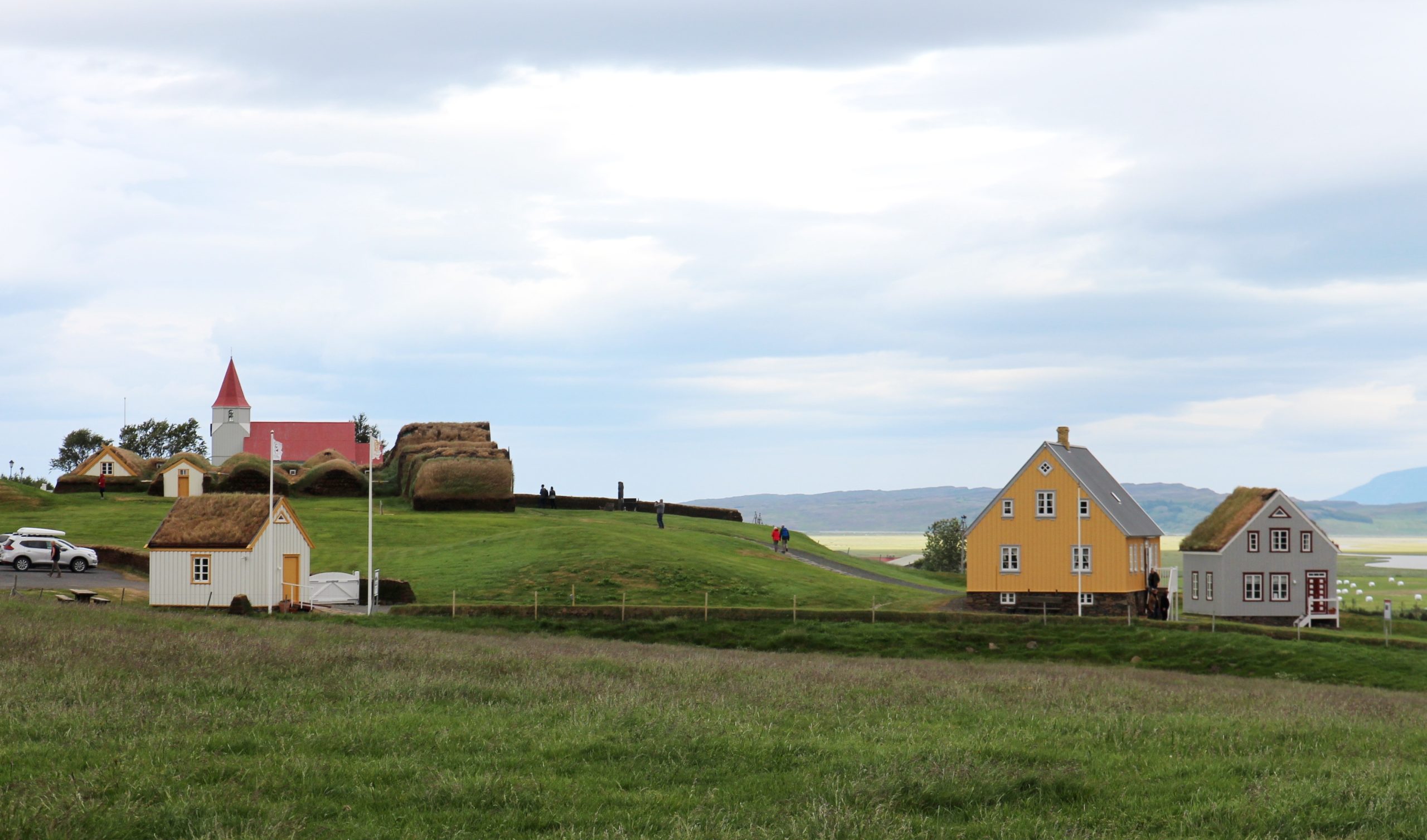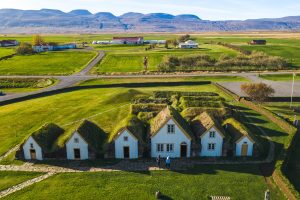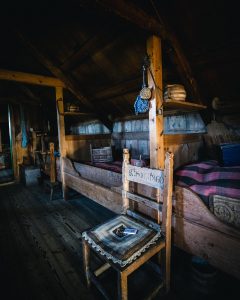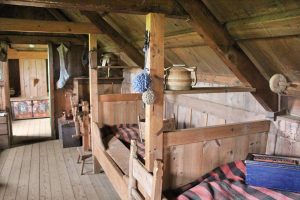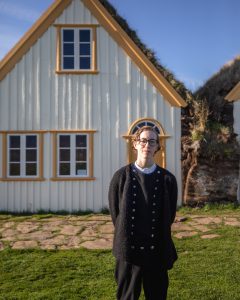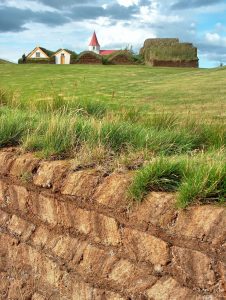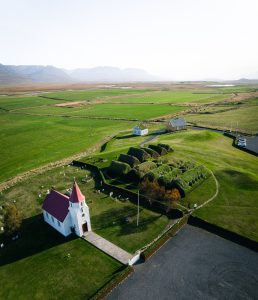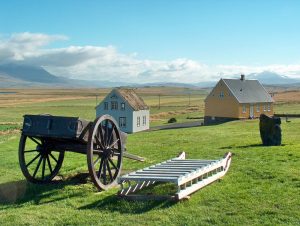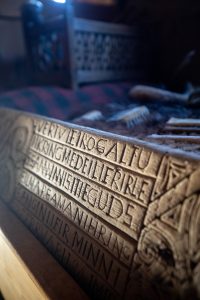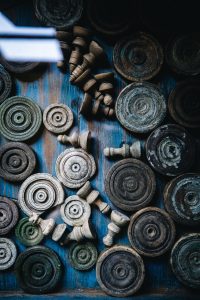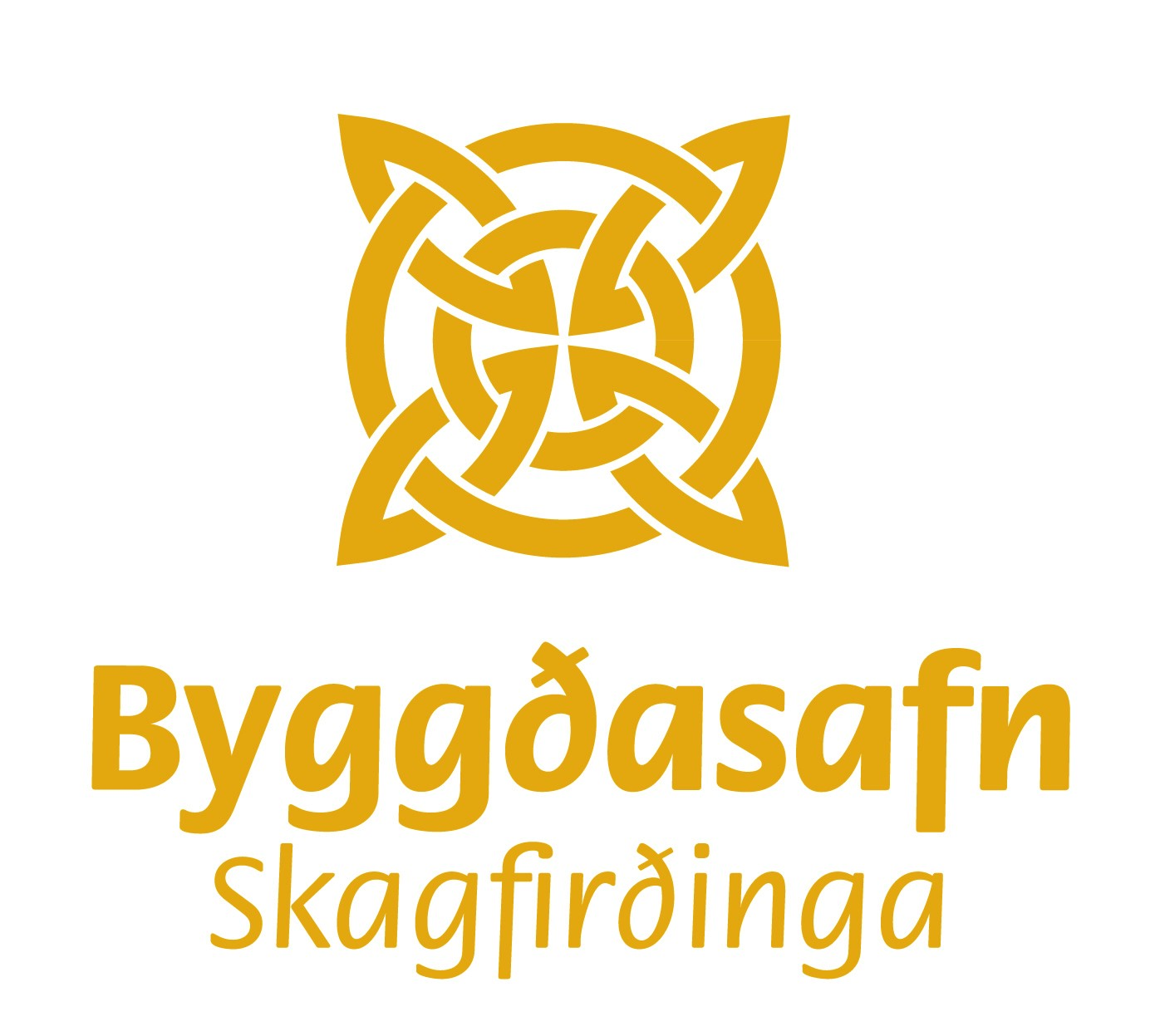Glaumbær Museum
According to sources, a farm has existed on the land of Glaumbær since the Age of Settlement around 900 AD. One of its most famous residents was Snorri Þorfinnsson, the first European to be born in North America, around 1000. The present buildings vary in age; the most recent addition was built 1876-79 and the oldest in the mid-18th century. The last residents moved out in 1947.
Travel back in time through the fascinating exhibition inside historic turf farm Glaumbær, part of Skagafjörður Heritage Museum. Admire the construction of the stately turf farm from the outside. Then take a step inside and simultaneously a step back in time. The permanent exhibition in Glaumbær includes tools and objects which help visitors envision daily life at the farm. Glaumbær is a beautiful example of traditional Icelandic architecture. Due to lack of timber, the walls were built of stones and turf pieces laid in a herringbone pattern with long turf strips between the layers.
Two 19th century timber houses also stand on the museum grounds, where there are other interesting exhibitions and a café. A ticket office and a souvenir shop is in a new reception building next to the parking lot.
Ten ideas for recreation in Skagafjörður region, NW-Iceland:
- Take a boat trip to Drangey island and then walk with a guide around the island, where locals used to graze their sheep, catch birds and collect eggs, and learn about the famous outlaw who sought shelter there.
- Bathe in Grettislaug, where Saga hero Grettir the strong warmed up after his hazardous swim from Drangey.
- Experience the Battle of Haugsnes (year 1246) , another bloody battle fought at the Sturlung Era, through the history and art exhibition in Kakalaskáli.
- Take part in one of the battles through virtual experience at the 1238: The Battle of Iceland immersive exhibition in Sauðárkrókur.
- Go on a wild rafting adventure on glacial rivers Austari- and Vestari-Jökulsá.
- While in the cradle of Icelandic horsemanship, a riding tour is a must. If you’re visiting in the autumn, don’t miss the Laufskálaréttir horse roundup, a true country festival.
- Explore archaeological sites at Hólar, the ancient bishopric and school, where Hólar University now teaches equine science, among other subjects.
- At Hólar, learn more about the region’s four-legged star at the Icelandic Horse History Centre, and the Icelandic Beer Centre, quench more than your thirst for knowledge!
- In Hófsós, learn about the fate of the Icelanders who emigrated to the New World and swim in one of the country’s most scenic swimming pools with a view of Drangey.
- Visit Víðimýri Turf Church near Varmahlíð. Built in 1834, it’s one of the last preserved turf churches in Iceland. It is managed by The Skagafjördur Heritage Museum and possible to buy a joint ticket for a visit both to Glaumbær and Víðimýri.
For more information and travel tips, go to www.visitskagafjordur.is

